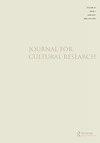黎巴嫩宗派主义的空间亵渎:al-núr广场和2019年10月17日的抗议活动
IF 0.6
Q1 CULTURAL STUDIES
引用次数: 2
摘要
2019年10月17日正在进行的黎巴嫩抗议活动标志着一个关键时刻,它记录了来自不同宗派和宗教背景的人民反对政治腐败的斗争。黎巴嫩北部以逊尼派为主的保守城市的黎波里引起了研究人员的注意,因为该市的抗议活动采取了在主要公共广场努尔广场(al-Nur square)举行“狂欢派对”的形式。本文透过Agamben的作品《亵渎》(Profanations)来调查的黎波里的抗议活动,以突显al-Nur广场抗议活动的动态,这些抗议活动似乎将宗教与政治混为一谈。文章特别指出,示威者重新布置广场周围的空间,企图亵渎以“安拉”为中心的宗派机构。然而,在他们的空间亵渎尝试中,抗议者似乎保留了宗教的完整,从而为他们的去宗派主义行为提供了可信度。对抗议活动的这种分析性解读,揭示了黎巴嫩任何改革尝试所固有的空间动态,包括2019年10月17日的抗议活动。这些抗议活动成为历史记录,记录了抗议者在宗教和政治方面的持续谈判,将去宗派主义的企图嵌入到他们对政治改革的每一个要求中。本文章由计算机程序翻译,如有差异,请以英文原文为准。
Spatial profanation of lebanese sectarianism: al-nūr square and the 17 October 2019 protests
ABSTRACT The ongoing 17 October 2019 Lebanese protests mark a critical moment that historicises the struggle of a people, from different sectarian and religious backgrounds, against political corruption. Tripoli, a conservative Sunni-majority city in Northern Lebanon, has caught the attention of researchers as its protests took the form of a ‘rave party’ held in its main public square, known as al-Nur Square. This article investigates the Tripolitan protests through the lens of Agamben’s Profanations to highlight the dynamics of the al-Nur Square protests that seem to conflate the religious and the political. The article specifically argues that the protestors reconfigure the space around the square in an attempt at profaning the sectarian apparatus that takes the ‘Allah’ icon as its centre. In their spatial attempt at profanation, however, the protestors seem to preserve the religious intact, thus giving credibility to their de-sectarianising act. Such an analytical reading of the protest sheds light on the spatial dynamics inherent in any Lebanese attempt at reform, including the 17 October 2019 protests. These protests become historical records that trace the protestors’ continuous negotiation of the religious and the political that embeds the attempt at de-sectarianisation within every demand they have for political reform.
求助全文
通过发布文献求助,成功后即可免费获取论文全文。
去求助
来源期刊

Journal for Cultural Research
CULTURAL STUDIES-
CiteScore
1.40
自引率
0.00%
发文量
23
期刊介绍:
JouJournal for Cultural Research is an international journal, based in Lancaster University"s Institute for Cultural Research. It is interested in essays concerned with the conjuncture between culture and the many domains and practices in relation to which it is usually defined, including, for example, media, politics, technology, economics, society, art and the sacred. Culture is no longer, if it ever was, singular. It denotes a shifting multiplicity of signifying practices and value systems that provide a potentially infinite resource of academic critique, investigation and ethnographic or market research into cultural difference, cultural autonomy, cultural emancipation and the cultural aspects of power.
 求助内容:
求助内容: 应助结果提醒方式:
应助结果提醒方式:


